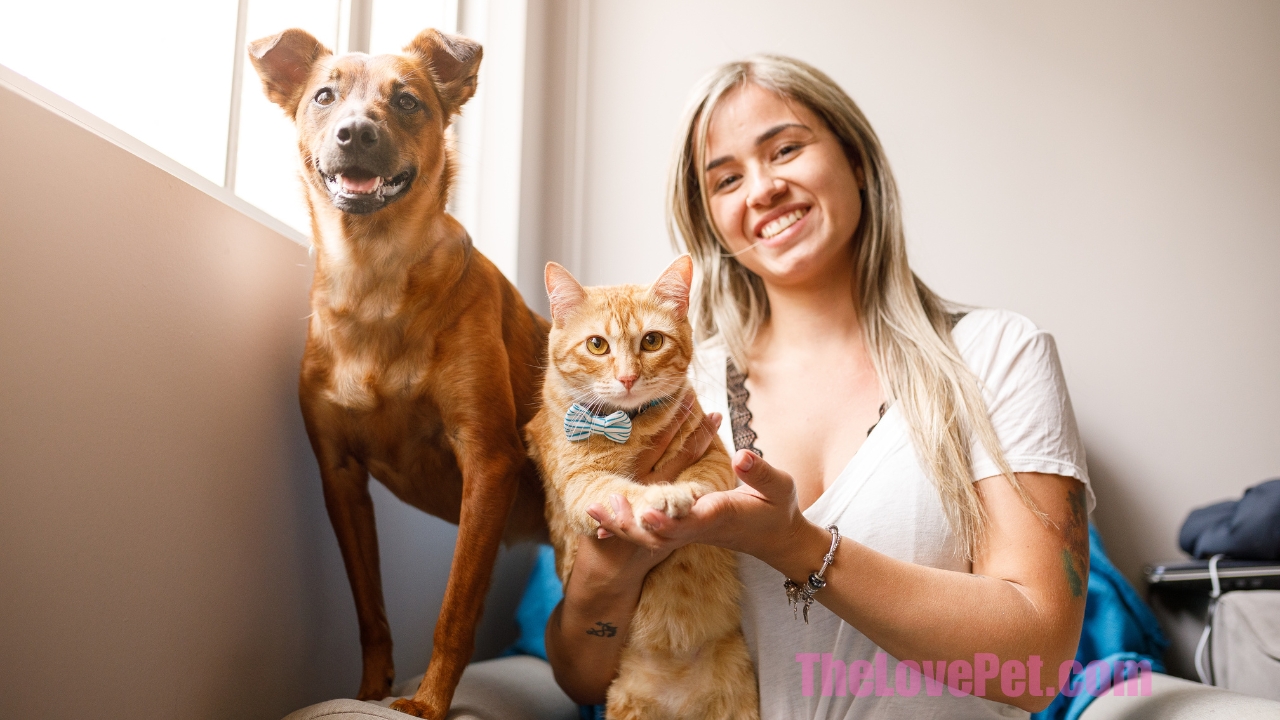Are Chinchillas Good Pets?
Chinchillas are becoming increasingly popular as household pets. They are known for being soft, fluffy, and cute. However, there are some important factors to consider before deciding if a chinchilla is the right pet for you.
Pros of Owning a Chinchilla
Fun and Entertaining
Chinchillas are very active and playful. They can be highly entertaining to watch as they jump and play. Chinchillas are especially lively at night.
Cute and Cuddly
With their soft fur and rounded features, most chinchillas make great cuddle buddies. They enjoy being held if socialized properly from a young age.
Long Lifespan
Chinchillas live relatively long lives for rodents, up to 10-20 years on average. This allows plenty of time to bond with your pet.
Cons of Owning a Chinchilla
Require Specialized Care
Chinchillas have some specific care requirements. They are sensitive to heat and humidity and require dust baths to keep their coat healthy. Their diet must be carefully managed.
Can Be Destructive
In the wild, chinchillas chew wood and plants. As pets, they need items to chew on to keep their teeth trimmed down. Otherwise, they may chew on furniture, books, wires, etc.
Not Ideal for Children
Chinchillas are easily frightened. Loud noises, rough handling, or chasing can stress them out. So they may not be the best pets for young children.
Chinchillas can make for great pets, but require specialized care and may not be ideal for households with very young children. Do your research to see if their needs would be a good match for your lifestyle.
Diet
Chinchillas require a specialized high-fiber diet consisting of hay, pellets, and limited treats. Too many carbohydrates or sugars can lead to obesity and diabetes.
Housing
These active animals need lots of space to hop and play. Multi-level cages with ramps and platforms are recommended. Cage lining and dust baths are also important.
Vet Care
Chinchillas are exotic pets requiring an experienced exotic vet. Annual checkups and teeth trimming are advised. Health issues like malocclusion and gastrointestinal stasis can occur.
Chinchilla Personality and Behavior
Highly Active
Chinchillas are most active at dusk and dawn. Out-of-cage playtime is ideal during their natural active periods.
Jumping Skills
Chinchillas can leap several feet into the air! This amazing ability means securing cages and play areas is a must.
Dust Bathing
Chinchillas roll around in special dust to absorb oil in their dense fur. Most enjoy their dust bath time.
#FAQ #Update #AdditionalContent
1. Can chinchillas be kept as pets?
2. What are the typical characteristics of chinchillas as pets?
3. What do chinchillas eat, and how should their diet be managed?
4. What factors should be considered when choosing a cage for a pet chinchilla?
5. What toys and accessories are suitable for chinchillas to ensure their well-being?
Chinchillas can be delightful companions for those who understand their unique needs. This guide covers all aspects of caring for a pet chinchilla, from their temperament to their dietary requirements and habitat.
Can You Have a Pet Chinchilla?
Domestic chinchillas can indeed be kept as pets. However, potential owners should be aware of some key traits:
– Chinchillas are crepuscular, primarily active at dawn and dusk.
– They are generally skittish and may not enjoy being held, but can form strong bonds with owners.
– Due to their high-strung nature, they may not be suitable for small children.
– Proper acclimation to human touch during their early stages (as kits) can lead to friendly, patient pets.
Understanding Chinchilla Characteristics
Chinchillas typically live for about 15 years, with some reaching 18-22 years. They are small creatures, with body lengths ranging from 10-14 inches and heights of 5-6 inches. While they can become tame and playful with gentle handling, some may not like being held or cuddled.
Chinchilla Habits: Nocturnal Animals
Chinchillas are mostly nocturnal, which means they are most active at night or during dawn and dusk. They prefer a quiet environment during the day and thrive on a consistent routine for handling and feeding. Providing a spacious cage for exercise and playtime is essential, as overheating can be a concern.
Chinchilla Diet
Chinchillas require a diet rich in roughage, primarily consisting of high-quality grass hay and chinchilla pellets. Treats should be given sparingly (one teaspoon per day). Their sensitive digestive systems necessitate gradual dietary changes to avoid upset. Avoid rich or fatty diets, as they can lead to digestive issues. Consider offering twigs and branches from safe trees, excluding those treated with pesticides or from toxic trees.
Choosing the Right Chinchilla Cage
Chinchillas are small rodents native to South America, known for their soft fur. In captivity, they are prone to overheating due to their thick fur, so it’s crucial to place their cage in a cooler, quiet area. Larger cages are preferable, with a minimum floor space of 24 by 24 inches. Opt for tall cages with shelves and ladders to facilitate climbing. Wire cages are best, while plastic cages should be avoided due to their chewing tendencies. Line the tray with wood shavings (avoid cedar and hardwood) or aspen/natural newspaper shavings.
Cage Placement and Temperature
The chinchilla’s cage should be situated in a quiet, draft-free area away from direct sunlight, as overheating can be detrimental. Monitor temperatures in the summer to ensure they do not exceed 77 degrees Fahrenheit. If air conditioning is unavailable, you can cool the cage by placing a shallow pan of ice cubes inside or draping a damp towel over part of it. Elevating the cage on a table or stand can help the chinchilla feel secure.
Chinchilla Toys & Accessories
Providing appropriate accessories is vital for your chinchilla’s well-being:
– Glass water bottles are ideal to prevent chewing.
– If using plastic, encase it with wire mesh or purchase commercial chew guards.
– For feeders, opt for hopper-style feeders that attach to the cage’s exterior.
– Food bowls should be heavy ceramic and cleaned daily.
– Offer safe chew toys like blocks of wood and pesticide-free tree branches.
– Avoid toys with small or plastic parts that could be ingested.
– Provide a “chinchilla block” or pumice block for dental health.
– Consider a 15-inch wheel with a solid running surface and an open side (avoid wire wheels) for exercise.
This comprehensive guide will help you create a happy and healthy environment for your pet chinchilla.
#FAQ #Update #AdditionalContent
1. What kind of diet do chinchillas require?
2. Why do chinchillas bathe in dust instead of water?
3. What is the average lifespan of a chinchilla?
4. Are chinchillas suitable for working parents?
5. How trainable are chinchillas as pets?
If you’re considering adding a small, furry friend to your family, have you ever thought about an exotic pet like a chinchilla? Native to the Andes Mountains, these plush pals are endangered in the wild but thrive as pets. While chinchillas are part of the rodent family, they require specialized care and have a unique personality. Here are 10 reasons why chinchillas make fantastic pets:
1. Low-Maintenance Diet
Chinchillas have simple dietary needs, consisting of a high-fiber, low-fat, and low-sugar diet based on compacted chinchilla pellets. Avoid overloading them with sweet treats.
2. Softest Fur in the World
Chinchillas are renowned for their soft, luxurious fur, which can hold up to 50 hairs per follicle. Their dense fur also reduces dander, making them a great choice for allergy-prone pet lovers.
3. Fur as a Defense Mechanism
Chinchilla fur serves as a defense mechanism. When threatened, they can release patches of fur to escape predators, a behavior known as fur slip. Avoid grabbing them by the fur to prevent mishandling.
4. Dust Baths
Chinchillas maintain their silky fur by taking dust baths instead of water. Dust baths also help reduce stress. Bathing your chinchilla at least twice a week is recommended.
5. Long Lifespan
Chinchillas have an average lifespan of 10-15 years and can live up to 20 years. This allows for a strong, long-lasting bond with your pet.
6. Ideal for Working Parents
Chinchillas are adaptable to a working parent’s schedule. They are often nocturnal or crepuscular, sleeping during the day and being active at night or during dusk and dawn.
7. Affectionate
While not big on cuddling, chinchillas are naturally curious and affectionate with their owners. Allowing them out of their cages daily fosters their well-being.
8. Energetic
Despite their name, chinchillas are not “chill.” They are typically skittish and love to run, jump, and climb. They have unique personalities and thrive on activity.
9. Trainable
Chinchillas can be trained with patience. Starting when they are young and building a strong bond helps them become more social and receptive to handling.
10. Consider More Than One
Chinchillas are social animals and often live in colonies or herds. While not mandatory, getting two can prevent boredom and loneliness.
These cute creatures have many qualities that make them ideal pets for the right owner. They offer the opportunity to build lasting bonds and have a loyal pocket-size friend.
By Mimi Hepstinstall
#FAQ #Update #AdditionalContent
1. Do Chinchillas Make Good Pets?
2. What Are Chinchillas?
3. What Do Chinchillas Eat?
4. What Do Pet Chinchillas Need in Captivity?
5. Who is the Author of the Text?
Cuddly, adorable, and super-soft, the domestic chinchilla is a fairly popular choice as a pet. Like many other domesticated rodents commonly kept as pets, chinchillas are fairly low-maintenance and fascinating to observe thanks to their delightfully playful and curious temperaments. But is it the right pet for you? Furthermore, what kind of diet and enclosure setup do these unique creatures need to thrive in captivity?
What Are Chinchillas?
Chinchillas are small rodents classified within the Chinchillidae family. Today, this group is very small, as most of its members aside from chinchillas and viscachas have long gone extinct. They are fairly closely related to other rodent species and the similarly-named but distinct chinchilla rats. There are actually two main species of chinchillas, the long-tailed chinchilla, Chinchilla lanigera, and the short-tailed chinchilla, Chinchilla chinchilla. Both are very similar in appearance aside from the length of their tails and the size of their ears.
In the wild, both species are endangered due to habitat loss and being hunted by humans for their ultra-soft fur. Today’s domestic pet chinchilla is a descendant of both species and was produced by careful, repeated crossbreeding of the two. Unfortunately, the wild short-tailed variety is rapidly nearing extinction. However, today, chinchillas are almost exclusively bred to be sold as exotic pets rather than for their fur as they were in the past. This has greatly increased their numbers in captivity.
Do Chinchillas Make Good Pets?
Chinchillas can make great pets for adults and older, responsible children. They are fairly low-maintenance, not particularly expensive to care for, and readily available from various pet shops and breeders. Though they can be shy and anxious at first, they tame easily and develop close bonds with their owners. In most areas, there are currently no specific legal restrictions on the sale and ownership of chinchillas. A single chinchilla can be purchased for as little as $150, though this price sometimes fluctuates depending on the current supply and demand. They can live alone, but they fare especially well in pairs, as they are very social and playful. As far as handleability goes, chinchillas tolerate and even enjoy being held and petted, provided you spend some time carefully socializing them while they’re young. They’re also a lot of fun to observe in captivity and are quiet, not particularly messy or smelly, and generally very docile. In short, chinchillas are great exotic pets and do well in captivity.
What Do Chinchillas Eat?
Chinchillas are technically omnivores, as they sometimes eat insects in the wild, but they primarily feed on various types of vegetation. A wide variety of safe grasses, twigs, flowers, leaves, vegetables, and fruits are all typical fare for both wild and pet chinchillas. Although they don’t necessarily need vitamin supplements, their diets should ideally have plenty of fiber, calcium, sodium, and phosphorus while also being low in fat and carbs. The bulk of any pet chinchilla’s diet should be made up of hays like orchard grass, oat hay, and timothy hay. Additionally, commercial pellet food that is fortified with essential vitamins and nutrients should also make up a large portion of their meals. A constant supply of hay, pellets, and other vegetation will also provide chinchillas with a means of wearing down their teeth. This way, they won’t destructively gnaw on their enclosure or other inedible objects. Aside from these staple foods, various nuts, cereals, and dried fruits make great treats. However, because these tasty snacks contain high amounts of sugar and fat, your chinchilla should only eat them on occasion in small amounts.
What Do Pet Chinchillas Need in Captivity?
Chinchillas are moderately low-maintenance pets, though they must live in fairly large, secure enclosures. Your chinchilla should not be able to freely run around your home unsupervised, as they are very curious animals and prone to destructive chewing and scratching. Tall, wide, multi-level enclosures are ideal for pet chinchillas, as they are interesting and enriching and encourage your pet to actively explore their environment. Make sure the enclosure has no holes, weak points, or openings that could provide a means of escape. The floor of the enclosure should have soft, absorbent bedding like fleece liners, pine shavings, or paper shavings. A durable, chew-proof water bottle with cool, fresh water should always be available for drinking. Toys like wheels, colorful balls, and lots of branches to chew on will keep your chinchilla busy, happy, and thriving. As far as other decorations go, a cozy hide or two will provide your pet chinchilla with a quiet, dark spot to rest and hide away when they’re feeling shy. The enclosure also needs a small tray for your chinchilla to take dust baths. Most pet shops sell chinchilla dust made of clay and volcanic ash. Your chinchilla will often roll around in this dust to keep their coat clean and healthy. Generally, chinchillas don’t require any kind of specific heating or lighting. They are most comfortable at around room temperature, or between 60F and 75F. Humidity should be moderate at around 50% to 60%. Keep in mind, though, that chinchilla fur is very dense, and chinchillas can’t sweat or regulate their body temperature very well. This means they can quickly overheat at temperatures above 80F.









